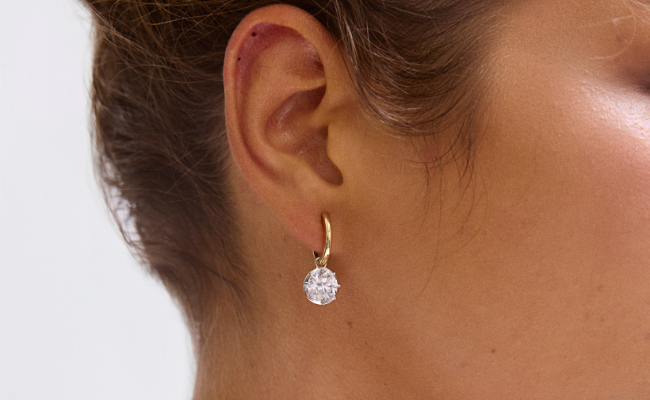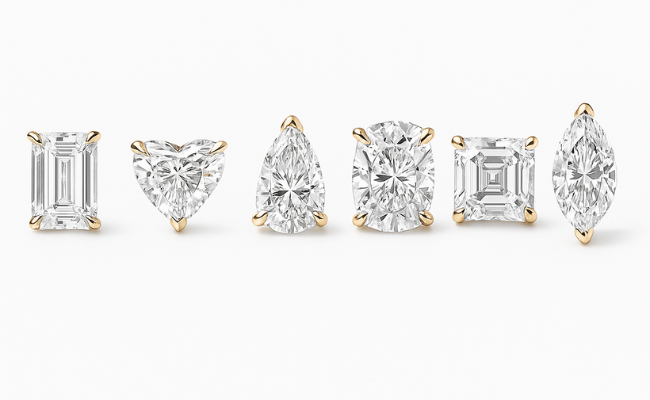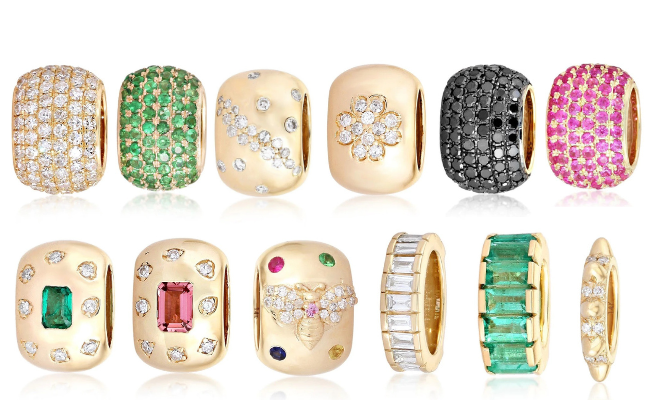The Timeless Appeal of a Diamond Tennis Bracelet: An Investment Piece
Some pieces of jewelry transcend mere adornment to become iconic symbols of elegance, sophistication, and enduring value. The diamond tennis bracelet is one such piece. With its continuous, glittering line of perfectly matched diamonds, it possesses a unique ability to elevate any look, from casual to black-tie. Beyond its stunning beauty, a diamond tennis bracelet represents a shrewd and enduring investment, especially in an era where high-quality, ethically sourced lab-grown diamonds are making luxury more accessible than ever before. This article explores why the diamond tennis bracelet is not just a passing trend but a truly timeless asset that you will cherish for a lifetime and beyond.
A Storied Name from a Famous Match
Before it was known by its current name, the diamond tennis bracelet was a beloved accessory called a "diamond line" or "eternity" bracelet. Its simple yet elegant design, a single flexible strand of diamonds, had been a staple in fine jewelry for decades. However, its modern moniker was born from a pivotal moment in sports history.
The year was 1987, and the U.S. Open was in full swing. Legendary tennis player Chris Evert, known for her graceful style both on and off the court, was in the middle of a heated match. During a powerful volley, the clasp on her delicate diamond bracelet snapped, sending the sparkling piece tumbling to the court. Evert immediately requested a pause in the match to search for her lost jewelry. This highly publicized event, broadcast to millions of viewers, forever linked the delicate diamond bracelet with the game of tennis. From that day on, the "tennis bracelet" was a household name.
The story itself is a testament to the bracelet's design, it's meant to be worn, lived in, and even played in. Chris Evert’s bold decision to halt a professional match for her bracelet highlighted not only its sentimental value but also the fact that it was a piece so cherished, it was never meant to be taken off.
The Anatomy of a Timeless Investment
What makes a diamond tennis bracelet such a strong candidate for an investment piece? It's all about the quality and composition of its parts. A classic tennis bracelet is a testament to meticulous craftsmanship and a sophisticated design that never goes out of style.
At its core, the bracelet is a fluid line of diamonds, each one carefully selected to match its neighbors in color, clarity, and size. The diamonds are typically set in a minimalist, open setting, like a classic four-prong design, which allows light to enter the stones from all angles, maximizing their brilliance and fire. This continuous circle of sparkle is what gives the bracelet its signature look.
The quality of the diamonds themselves is the most critical factor in the bracelet's value. The "4 Cs" of diamonds, Cut, Color, Clarity, and Carat weight, are more important here than perhaps in any other type of jewelry. Because the stones are placed side-by-side, any inconsistency in quality becomes immediately noticeable. A truly high-quality tennis bracelet will have diamonds that are perfectly uniform, creating a seamless and breathtaking river of light.
Natural Diamonds vs. Lab-Grown Diamonds: A Modern Choice
For many years, the only option for a diamond tennis bracelet was one made with natural, mined diamonds. However, the jewelry landscape has changed dramatically with the advent of high-quality lab-grown diamonds. This modern innovation offers a compelling alternative for those seeking both beauty and value.
Natural diamonds are geological marvels, formed deep within the Earth's crust over billions of years. They are rare, and their value has been historically tied to their scarcity. Lab-grown diamonds, on the other hand, are created in a controlled laboratory environment using advanced technology that replicates the Earth’s natural formation process in just a few weeks. The key takeaway is this: a lab-grown diamond is chemically, physically, and optically identical to a natural diamond. They are both real diamonds.
The differences lie in their origin and, most importantly, their price. Due to the shorter supply chain and efficient production process, lab-grown diamonds typically cost 30-40% less than their natural counterparts of the same quality. This price advantage means you can acquire a larger, higher-quality diamond tennis bracelet for a fraction of the cost. This makes the "investment" aspect of the piece more accessible, allowing you to get more sparkle for your money.
Lab-Grown Diamonds: A Smart Investment in the Future
While the traditional view of jewelry investment often hinges on resale value, the modern perspective is more nuanced. An investment piece isn't just about financial appreciation; it's about the value it adds to your life, its timelessness, durability, and the joy it brings. In this regard, a lab-grown diamond tennis bracelet is a superior choice.
Choosing lab-grown diamonds provides peace of mind. They are guaranteed to be conflict-free, offering an ethical alternative to mined diamonds, whose origins can sometimes be murky. Additionally, the process of creating them has a significantly smaller environmental footprint than large-scale mining operations. This aligns with the values of the modern consumer, who seeks products that are not only beautiful but also ethically and sustainably produced.
Furthermore, a lab-grown diamond tennis bracelet is just as durable and long-lasting as one made with natural diamonds. Both are a perfect 10 on the Mohs scale of hardness, making them ideal for everyday wear. This durability ensures that your bracelet will maintain its brilliance and integrity for years to come, becoming a cherished heirloom that can be passed down through generations. The fact that you acquired a larger, more brilliant piece for a more reasonable price simply adds to its long-term value.
A Style That Never Fades
The true power of the diamond tennis bracelet lies in its incredible versatility. It is a piece that defies categorization and seamlessly transitions from day to night, from casual to formal.
For a daytime look, it can be worn on its own as a singular statement of refined elegance. Paired with a simple watch or layered with other bracelets, it adds a touch of subtle glamour to an everyday outfit. For a special occasion, it becomes a dazzling centerpiece, complementing an evening gown or cocktail dress without overpowering the rest of your ensemble. The ability of this piece to adapt to any occasion makes it an essential part of a versatile jewelry collection.
Its design is also a blank canvas for personalization. While the classic round brilliant cut is the most popular, tennis bracelets can feature various diamond shapes, from the sharp, modern lines of a princess cut to the elegant, elongated shape of an emerald cut. This allows you to choose a bracelet that perfectly reflects your personal style and taste.
Conclusion
The diamond tennis bracelet is more than just a beautiful accessory; it is a profound statement of timeless style, enduring quality, and a smart, modern investment. Its unique history, rooted in a moment of pure sporting drama, has cemented its status as a cultural icon. The ability to now acquire this classic piece with high-quality lab-grown diamonds makes it more accessible, ethical, and valuable than ever before.
A tennis bracelet is a purchase you will never regret. It’s a piece that will bring you joy every time it catches the light, a piece you will wear for life, and a piece that will become a cherished part of your family's story. It is the ultimate expression of elegance and an investment that truly lasts.
Shop Nolita Diamonds for High-Quality Lab-Grown Diamonds
Ready to own a piece of history and timeless elegance? Explore Nolita Diamonds' exquisite collection of high-quality lab-grown diamond tennis bracelets. Each piece is meticulously crafted to be a stunning, enduring investment that you will adore for a lifetime.
FAQs for Diamond Tennis Bracelets
1. What is a tennis bracelet?
A tennis bracelet is a type of bracelet that features a continuous, symmetrical line of diamonds or other gemstones. It is known for its delicate and flexible chain, which allows it to comfortably wrap around the wrist. The term "tennis bracelet" originated in 1987 after a professional tennis player, Chris Evert, famously lost her diamond bracelet during a match and paused play to retrieve it.
2. Are lab-grown diamond tennis bracelets a good investment?
Yes, a lab-grown diamond tennis bracelet is an excellent investment. While lab-grown diamonds may not have the same resale market as natural diamonds, their value as an investment lies in their accessibility, durability, and timeless appeal. Lab-grown diamonds are chemically and physically identical to natural diamonds, offering the same beauty and brilliance at a significantly lower cost. This allows you to acquire a larger, higher-quality piece for your budget, which adds to its personal and aesthetic value over time.
3. How do I choose the right tennis bracelet?
When choosing a tennis bracelet, consider the 4 Cs of the diamonds: Cut, Color, Clarity, and Carat weight. The cut is crucial as it determines the diamond's brilliance. Consistency in the color and clarity of all the diamonds in the bracelet is also very important for a high-quality look. Finally, consider the total carat weight and the metal type (e.g., 14K gold or platinum) based on your budget and style preference. Ensure the bracelet has a secure clasp, often with a safety catch, to prevent loss.
4. How do you clean and care for a diamond tennis bracelet?
To keep your diamond tennis bracelet sparkling, clean it regularly with a soft brush and a solution of mild dish soap and warm water. Gently scrub the diamonds and the setting, then rinse thoroughly. Avoid using harsh chemicals or ultrasonic cleaners on a regular basis, as they can sometimes loosen the settings. Store your bracelet in a soft pouch or a separate compartment in your jewelry box to prevent it from getting scratched or tangled with other pieces. It's also a good idea to have it professionally inspected by a jeweler once a year to ensure the clasp and settings are secure.
5. What is the difference between a lab-grown diamond and a natural diamond?
The primary difference between a lab-grown diamond and a natural diamond is their origin. Natural diamonds are formed by geological processes over billions of years within the Earth's mantle. Lab-grown diamonds are created in a controlled laboratory environment over a few weeks. However, from a chemical, physical, and optical standpoint, they are identical. Lab-grown diamonds are not "fake" or "simulated," they are real diamonds with the same brilliance and durability. The key distinction is their cost and ethical footprint, with lab-grown diamonds being more affordable and conflict-free.





